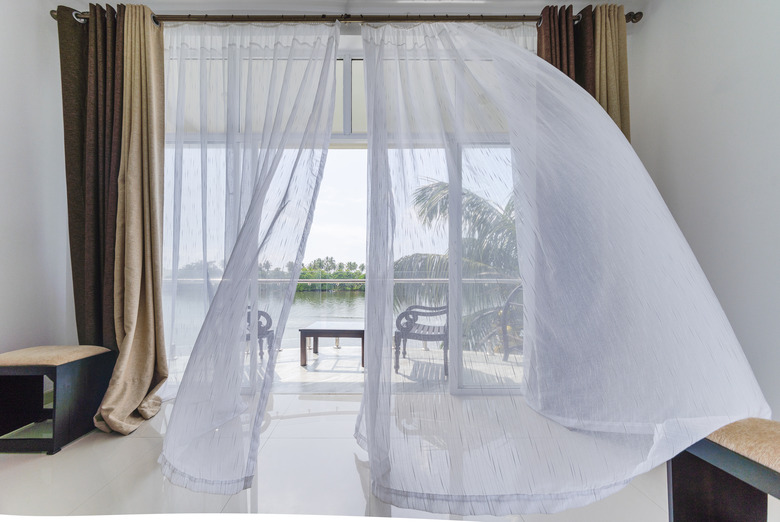How To Use Drapery Pins With An Unpleated Drapery Panel
We may receive a commission on purchases made from links.
Some people love the traditional look of pleated curtains hung with drapery pins, but others don't like it. Even if you eschew the pleats, however, you may still wish to consider using drapery pins to hang your curtains. Drapery pins make it easier to slide curtains across the rod and allow you to use a traverse rod if desired.
How to Use Drapery Pins Alone
How to Use Drapery Pins Alone
The fastest and easiest way to hang your drapes with pins is to simply slide the pins into the top of the curtain. You can get away with this if your curtain has a liner or a nicely sized rod pocket. The trick is spacing your hooks close enough together so that the drapery doesn't sag at the top between pins.
- Decide how many drapery pins you'll need. Usually, one pin every 4 to 6 inches is enough. Flimsy fabric may need more pins, however.
- Lay out your curtain so that its back side faces up.
- Starting at one end of the curtain, measure and mark your pin spacing. Ideally, you'll be inserting your pins into the rod pocket, but you may use the header instead if it's tall enough to accommodate your pins.
- Place the point of your pins just above the hem on your pocket or header and slide them into the fabric. As you do so, work the fabric so that the pin goes through the back of the rod pocket and then pops back out at the top of the pocket. Go through one layer of fabric only; the pins should not show on the front of your curtain at all.
- Repeat this process at every interval you marked on your curtain when you measured.
- Hang the curtain by draping the pins over the curtain rod or feeding them into the hooks of your traverse rod.
How to Use Pins and Pleat Tape
How to Use Pins and Pleat Tape
If your curtain fabric is very thin or soft, you may find that it hangs funny when you put it up with drapery hooks. If so, you can use pleating tape and pleating pins to make the top of the curtain a bit stiffer. You can, of course, add pleats to your drapes with pleating tape as well, but you don't have to do so. You can use it to just firm up your fabric and install your drapery pins more easily.
- Lay the curtain out with the back facing you.
- Measure the curtain width and cut a piece of pleating tape to match.
- Pin the pleating tape across the top of the curtain at the desired height. Verify that the pin pocket openings on the tape face down toward the bottom of the curtain.
- Sew the pleating tape in place along the marked sewing line. Make sure you stay on the line when sewing so that your seam isn't crooked and you don't accidentally sew any pin pockets shut.
- Slide your pleating pins into the pleating tape at your desired intervals. The pleating tape has small pockets that you can easily slide the pins into. This is important since pleating pins don't have sharp pointy ends like regular drapery pins.
- If you've decided to add pleats to your drapes, install just the tip of one side of a pleating pin into one of the pockets on the pleating tape. Push the fabric out away from you to form the pleat. Make the pleat the size you want and then slide the other side of the pleating pin in place to hold the pleat.
- Continue making uniform pleats across the top of the curtain or simply install curtain hooks without pleating. Repeat until you've worked your way across the entire drapery.
- Hang the curtain by looping the drapery pins over the curtain rod or installing them in a traverse rod if desired.
